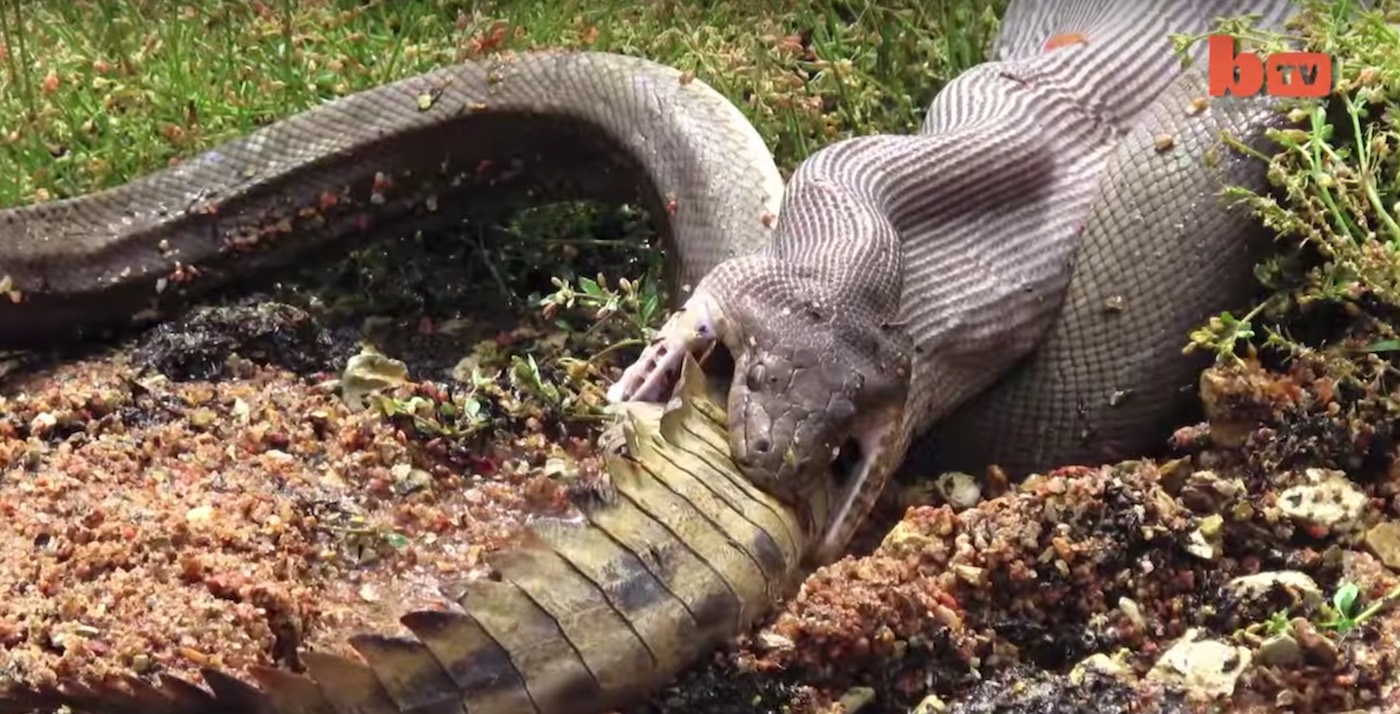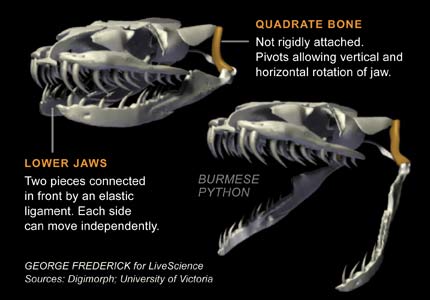Reptile Death Match: Snake Devours Crocodile (Video)

A python was caught on camera devouring a crocodile after an epic battle on the shores of an Australian lake.
Amazing footage of the incident shows the snake constricting its prey and slowly stretching its mouth over the crocodile's scaly body during the course of five hours. The reptile death match captured the attention of people at Lake Moondarra, near Mount Isa in the state of Queensland, over the weekend.
"You could see the crocodile in the snake's belly which I think was probably the more remarkable thing," local resident Tiffany Corlis told Australia's ABC News. "You could actually see its legs and see its scales and everything, it was just amazing." [Beastly Feasts: See Other Amazing Animals Devouring Prey]
Though the stomach-turning meal may look incredible, some animal experts say the incident isn't all that uncommon.
"The big eat the smaller," Lindsey Hord, a biologist with the Florida Fish and Wildlife Conservation Commission (FWC), wrote in an email to Live Science, noting that big snakes regularly eat crocodile relatives known as caiman in South America.
The combatants in this case are thought to be an olive python and a freshwater Johnston's crocodile, both native to northern Australia. Terry Phillip, of South Dakota's Reptile Gardens, told National Geographic that olive snakes are "known for being phenomenally powerful, pound for pound, and for feeding on large food items."

Phillip added that snakes regularly swallow prey 75 to 100 percent their size. But footage of their amazing eating abilities continues to astound.
Sign up for the Live Science daily newsletter now
Get the world’s most fascinating discoveries delivered straight to your inbox.
A sensational YouTube video from 2012 showed an anaconda regurgitating the carcass of a goat. And an engorged Burmese python was picked up in the Florida Everglades in 2011 after it had swallowed a 76-lb. (34 kilograms) deer. But sometimes snakes can bite off more than they can chew. Back in 2005, pictures circulated of another python that burst after it apparently tried to eat an American alligator in Florida.
Snakes don't "unhinge" their jaw to eat; rather their two lower jaws are not actually connected so they can move independently of one another while the snakes eat their large prey. Scientists recently decoded the genome of Burmese pythons and found the snakes' impressive snacking skills arise from a genetic capacity to alter their metabolism and their organs (which sometimes double in size) after a meal. That research was published in December in the journal Proceedings of the National Academy of Sciences.
Follow Megan Gannon on Twitter and Google+. Follow us @livescience, Facebook & Google+. Original article on Live Science.











